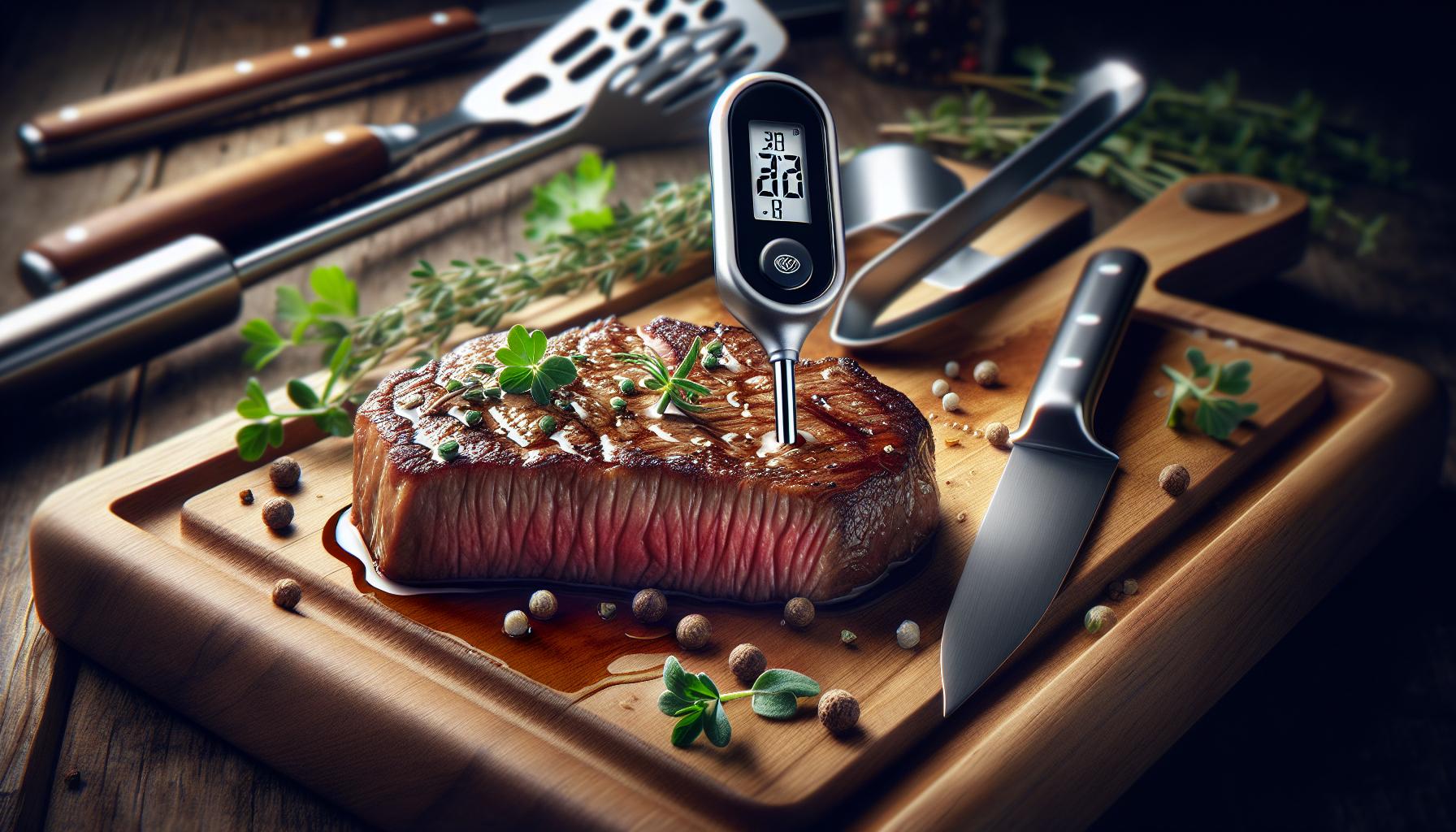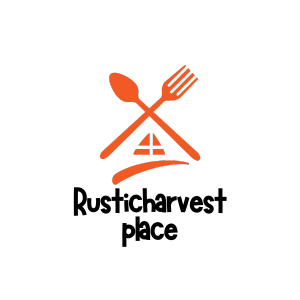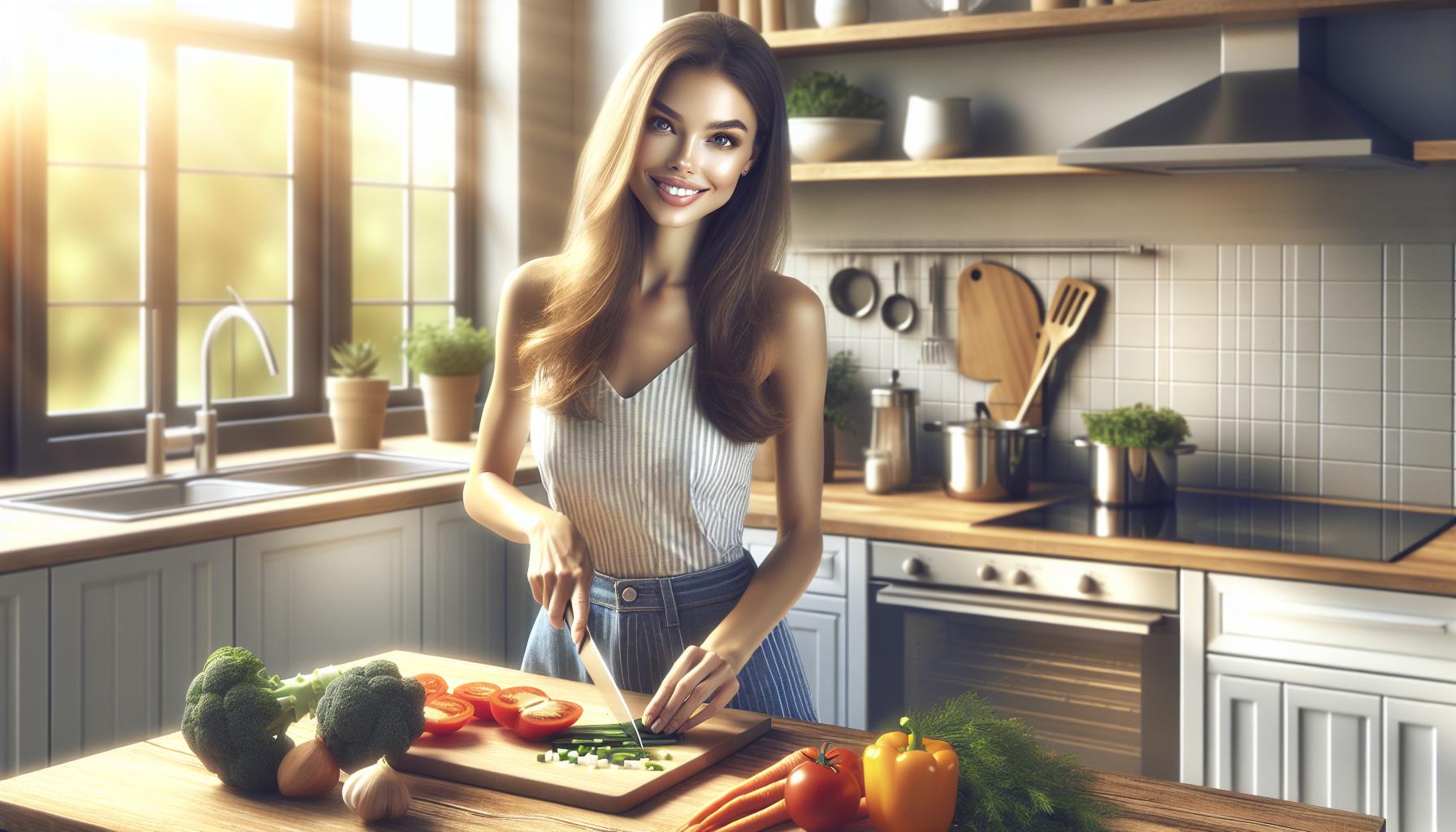Mastering cooking techniques transforms ordinary ingredients into extraordinary culinary masterpieces. Whether you’re a kitchen novice or an aspiring chef the right techniques can elevate your dishes from “meh” to “magnificent” in no time. From sautéing to braising these fundamental skills serve as the building blocks of delicious cooking.
Think of cooking techniques as your kitchen superpowers. Just like a superhero needs their special abilities to save the day a cook needs proper techniques to rescue dinner from disaster. They’re the difference between serving a perfectly seared steak and something that resembles a leather boot. The good news? Anyone can learn these essential skills with practice patience and the right guidance.
Essential Cooking Methods Every Home Chef Should Know
Professional cooking revolves around mastering fundamental cooking techniques that form the foundation of culinary arts. These methods create distinct flavors textures through the application of heat to ingredients.
Dry Heat Cooking Techniques
Dry heat cooking methods use hot air or fat to transfer heat to food. Roasting creates golden-brown crusts on meats at temperatures between 350-450°F in an oven. Sautéing involves cooking small pieces of food in a pan with minimal oil over medium-high heat for 3-5 minutes. Grilling imparts smoky flavors through direct heat exposure at temperatures ranging from 400-550°F. Pan-searing locks in moisture by cooking proteins at high heat (450-500°F) for 2-3 minutes per side. Deep-frying submerges food in 350-375°F oil until crispy within 5-7 minutes.
Moist Heat Cooking Methods
Moist heat techniques use water-based liquids to cook food gently. Steaming preserves nutrients by suspending ingredients over boiling water for 5-10 minutes. Poaching cooks delicate items like eggs fish in liquid heated to 160-180°F. Braising tenderizes tough cuts through partial submersion in liquid at 300°F for 2-4 hours. Stewing combines ingredients in liquid heated to 200°F for 45-90 minutes to develop rich flavors. Simmering maintains temperatures between 185-200°F for soups stocks creating clear broths within 1-2 hours.
| Method | Temperature (°F) | Typical Duration |
|---|---|---|
| Roasting | 350-450 | 30-90 min |
| Deep-frying | 350-375 | 5-7 min |
| Braising | 300 | 2-4 hours |
| Poaching | 160-180 | 8-12 min |
| Simmering | 185-200 | 1-2 hours |
Mastering Temperature Control

Temperature control creates precise cooking conditions that determine texture flavor texture. Proper heat management transforms raw ingredients into perfectly cooked dishes while maintaining food safety standards.
Using Kitchen Thermometers
Digital instant-read thermometers provide accurate internal temperature readings in 2-3 seconds. Professional-grade probe thermometers monitor food temperature throughout the cooking process without opening the oven door. Safe minimum internal temperatures vary by food type:
| Food Type | Safe Internal Temperature (°F) |
|---|---|
| Poultry | 165°F |
| Ground Meats | 160°F |
| Beef Steaks | 145°F |
| Fish | 145°F |
| Pork | 145°F |
Calibrating thermometers in ice water (32°F) ensures accurate readings. Inserting the probe into the thickest part of foods provides the most reliable temperature measurement.
Heat Distribution Basics
Different cooking vessels distribute heat in distinct patterns. Cast iron pans retain heat evenly across the surface creating consistent browning. Stainless steel cookware heats quickly but develops hot spots near heat sources. Copper conducts heat rapidly providing precise temperature control. Heat distribution patterns affect cooking results:
- Direct heat concentrates temperature in specific areas
- Convection circulates hot air for even cooking
- Radiant heat travels in straight lines from source
- Conduction transfers heat through direct contact
- Ambient heat surrounds food with consistent temperature
Matching cooking vessels to heat sources optimizes temperature control. Heavy-bottomed pans prevent scorching by distributing heat gradually.
Knife Skills and Cutting Techniques
Mastering knife skills forms the foundation of efficient food preparation. Professional chefs rely on standardized cutting techniques to ensure uniform cooking times and enhance dish presentation.
Basic Knife Cuts
Professional kitchens utilize eight essential knife cuts for consistent food preparation:
- Julienne creates thin strips measuring 1/8 inch × 1/8 inch × 2-3 inches, perfect for stir-fries
- Brunoise produces tiny 1/8-inch cubes, ideal for garnishes or aromatic vegetables
- Batonnet cuts form 1/4-inch × 1/4-inch × 2-inch pieces, commonly used for French fries
- Dice generates uniform cubes in three sizes: large (3/4 inch), medium (1/2 inch), small (1/4 inch)
- Chiffonade slices leafy greens into thin ribbons, enhancing salads or garnishes
- Mince creates extremely fine pieces, essential for garlic or herbs
- Rondelle forms round slices from cylindrical vegetables, measuring 1/8 to 1/2 inch thick
- Oblique cut produces diagonal slices at a 45-degree angle, adding visual interest
- The pinch grip positions the thumb and forefinger on opposite sides of the blade near the handle
- The guide hand forms a claw shape, keeping fingertips tucked while guiding ingredients
- Standing posture maintains elbows at 90 degrees with feet shoulder-width apart
- Knife movement flows from tip to heel in a rocking motion
- Wrist position remains neutral to prevent strain during extended cutting sessions
- Blade alignment stays parallel to the cutting board for precise cuts
- Forward momentum comes from the shoulder rather than the wrist
- Board height positions at belly button level for optimal control
Food Preparation Methods
Food preparation methods establish the foundation for successful cooking outcomes through systematic ingredient processing techniques. These methods transform raw ingredients into components ready for cooking while maximizing flavor development.
Marination and Brining
Marination techniques infuse foods with enhanced flavors through acidic or enzymatic solutions. Acidic marinades containing citrus juices or vinegar tenderize proteins in 30 minutes to 4 hours, while enzymatic marinades with papaya or pineapple work in 15 to 30 minutes. Brining involves soaking ingredients in a salt-water solution (1 cup salt per gallon of water) for 1 hour per pound of meat. Dry brining requires applying salt directly to meat surfaces 24 hours before cooking, drawing out moisture that gets reabsorbed with the seasonings.
| Marination Type | Duration | Key Ingredients |
|---|---|---|
| Acidic | 30min – 4hrs | Citrus, vinegar |
| Enzymatic | 15-30min | Papaya, pineapple |
| Wet Brine | 1hr/lb | Salt water solution |
| Dry Brine | 24hrs | Coarse salt |
Mise en Place Organization
Mise en place creates an organized workflow through strategic ingredient preparation placement. A standard mise en place setup includes measured ingredients in prep bowls, preheated equipment ready for use, tools arranged by order of use, cleaned produce sectioned by recipe sequence. Professional kitchens organize ingredients in speed rails near cooking stations for efficient access during service. Common mise en place containers include 1/6 hotel pans for small items, 1/3 pans for bulk ingredients, 2-ounce portion cups for seasonings.
| Container Type | Best Use | Typical Capacity |
|---|---|---|
| 1/6 Hotel Pan | Small items | 2.2 quarts |
| 1/3 Hotel Pan | Bulk ingredients | 4.3 quarts |
| Portion cups | Seasonings | 2 ounces |
| Speed rails | Frequent-use items | Variable |
Advanced Cooking Skills
Advanced cooking skills elevate culinary creations from basic to exceptional through precise techniques and artistic presentation. These specialized methods transform good dishes into memorable dining experiences.
Sauce Making Fundamentals
Five classic French mother sauces form the foundation of sauce making: béchamel, espagnole, hollandaise, tomato, and velouté. Each sauce starts with a specific base ingredient combined with particular thickening agents. Béchamel uses roux with milk, while hollandaise combines egg yolks with clarified butter. Essential techniques include:
- Emulsifying oils into stable mixtures
- Reducing liquids to concentrate flavors
- Straining sauces for smooth consistency
- Tempering eggs to prevent curdling
- Mounting butter for glossy finish
Temperature control plays a crucial role in sauce consistency, with specific ranges for different types:
| Sauce Type | Temperature Range |
|---|---|
| Hollandaise | 140-150°F |
| Béchamel | 165-180°F |
| Reduction | 190-200°F |
Food Plating Techniques
Professional plating transforms dishes into visual masterpieces through balanced composition and strategic placement. Key elements include:
- Creating height through stacking components
- Using odd numbers for ingredient groupings
- Placing protein at 6 o’clock position
- Adding sauce through dots patterns circles lines
- Incorporating contrasting colors textures
Essential plating tools enhance precision presentation:
| Tool | Primary Use |
|---|---|
| Squeeze bottles | Sauce control |
| Ring molds | Shape formation |
| Offset spatulas | Smooth spreading |
| Tweezers | Precise placement |
- Protein: 6 ounces centered
- Starch: 4 ounces at 10 o’clock
- Vegetables: 4 ounces at 2 o’clock
Conclusion
Mastering cooking techniques opens up a world of culinary possibilities. From perfecting knife skills to understanding heat distribution each technique builds upon the next to create a comprehensive cooking foundation. These skills empower home cooks to tackle any recipe with confidence while producing consistently delicious results.
Learning proper techniques not only enhances food quality but also ensures kitchen safety and efficiency. As cooks continue practicing these fundamental skills they’ll discover that cooking becomes more intuitive and enjoyable. The journey to culinary excellence starts with mastering these essential techniques one step at a time.

